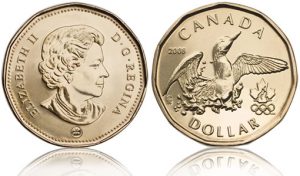 Yesterday’s trade saw USD/CAD within the range of 1.4172-1.4316. The pair closed at 1.4257, rising 0.28% on a daily basis, while marking its seventh consecutive trading day of gains. The daily high has been the highest level since April 30th 2003, when a high of 1.4425 was registered.
Yesterday’s trade saw USD/CAD within the range of 1.4172-1.4316. The pair closed at 1.4257, rising 0.28% on a daily basis, while marking its seventh consecutive trading day of gains. The daily high has been the highest level since April 30th 2003, when a high of 1.4425 was registered.
At 9:52 GMT today USD/CAD was losing 0.41% for the day to trade at 1.4204. The pair touched a daily high at 1.4276 during the early hours of the Asian trading session and a daily low at 1.4187 at 9:36 GMT. Resistance may be seen at the hourly 21-period EMA (1.4234) and then – in the area around the current daily high (1.4276). Support may be received at the hourly 100-period EMA (1.4169).
The Canadian dollar has recently been heavily influenced by a persistent decline in prices of oil. The commodity has fallen in 12 out of the past 19 trading days, while the last seven daily drops were successive. Oil futures for February delivery were up 2.71% on the day to trade at $31.27 per barrel as of 9:58 GMT, after advancing to as high as $31.41 earlier. Yesterday the commodity plunged to $29.93 per barrel, or a level unseen since November 2003. Oil has slumped 15.67% so far during the current month, following two straight months of decline.
On Wednesday USD/CAD trading may be influenced by the following macroeconomic reports and other events listed below.
Fundamentals
United States
Fed speakers
At 13:00 GMT the Federal Reserve Bank of Boston President, Eric Rosengren, is expected to take a statement, followed by a speech by the Fed President for Chicago, Charles Evans, scheduled at 17:30 GMT.
Monthly Budget Statement
The United States probably recorded a government budget deficit of USD 2.7 billion in December, according to market expectations, after a budget gap of USD 65.0 billion during the previous month. The latter represented a 14% increase compared to the figure posted in November a year ago, but yet, it has been the smallest deficit since August 2015.
In November total receipts were at USD 205 billion (a 7.3% year-on-year increase), while total outlays amounted to USD 270 billion (an 8.9% year-on-year surge), according to the report by the US Treasury.
The current fiscal year-to-date budget gap amounted to USD 201 billion, or a 13% increase compared to the same period a year earlier.
A larger-than-projected budget deficit in December would have a moderate bearish effect on the greenback. The Financial Management Service is to publish the official figure at 19:00 GMT.
”Beige Book” report
Also at 19:00 GMT, the Federal Reserve is to release its ”Beige Book” report, which is published eight times during the year. Each of the banks in the 12 Federal Reserve Districts gathers data in regard to current economic situation in the country on the basis of interviews with key business contacts, economists, market experts, and other sources. In case the Beige Book presents an optimistic economic outlook, this will usually support the US dollar, while a pessimistic view will have a bearish effect on the currency.
Bond Yield Spread
The yield on Canada’s 2-year government bonds went as high as 0.406% on January 12th, after which it closed at 0.338% to lose 5.2 basis points (0.052 percentage point) compared to January 11th. It has been the 12th drop in the past 19 trading days and also a second consecutive one.
The yield on US 2-year government bonds climbed as high as 0.968% on January 12th, or the highest level since January 8th (1.016%), after which it closed at 0.936% to lose 0.004 percentage point compared to January 11th. It has been the 12th drop in the past 20 trading days.
The spread between 2-year US and 2-year Canadian bond yields, which reflects the flow of funds in a short term, widened to 0.598% on January 12th from 0.550% on January 11th. The January 12th yield spread has been the largest one in at least 9 months.
Meanwhile, the yield on Canada’s 10-year government bonds soared as high as 1.343% on January 12th, after which it slid to 1.262% at the close to lose 6.2 basis points (0.062 percentage point) compared to January 11th. It has been the 12th drop in the past 19 trading days.
The yield on US 10-year government bonds climbed as high as 2.200% on January 12th, after which it slipped to 2.119% at the close to lose 5.6 basis points (0.056 percentage point) compared to January 11th. It has been the 13th drop in the past 20 trading days.
The spread between 10-year US and 10-year Canadian bond yields widened to 0.857% on January 12th from 0.851% on January 11th. The January 12th yield difference has been the largest one since January 5th, when the spread was 0.865%.
Daily and Weekly Pivot Levels
By employing the Camarilla calculation method, the daily pivot levels for USD/CAD are presented as follows:
R1 – 1.4270
R2 – 1.4283
R3 (range resistance) – 1.4297
R4 (range breakout) – 1.4336
S1 – 1.4244
S2 – 1.4231
S3 (range support) – 1.4217
S4 (range breakout) – 1.4178
By using the traditional method of calculation, the weekly pivot levels for USD/CAD are presented as follows:
Central Pivot Point – 1.4054
R1 – 1.4296
R2 – 1.4422
R3 – 1.4664
S1 – 1.3928
S2 – 1.3686
S3 – 1.3560





